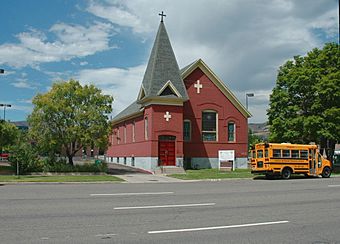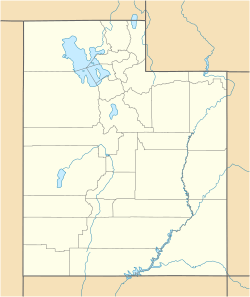Trinity A.M.E. Church facts for kids
Quick facts for kids |
|
|
Trinity A.M.E. Church
|
|
 |
|
| Location | 239 E. 600 South, Salt Lake City, Utah |
|---|---|
| Area | less than one acre |
| Built | 1909 |
| Architect | Howell, Hurley |
| Architectural style | Late Gothic Revival |
| NRHP reference No. | 76001831 |
| Added to NRHP | July 30, 1976 |
Trinity A.M.E. Church is a very old and important church building located at 239 E. 600 South in Salt Lake City, Utah. It is a historic part of the African Methodist Episcopal Church community.
Contents
A Special Place in History
This church holds a special place in Utah's history. It was the very first church started by Black people in Utah. This happened way back in the 1880s.
Starting the Church
For many years, the church members did not have their own building. They met in people's homes or in rented spaces. They even tried to build a church once, but it did not work out.
A Helping Hand
Finally, in 1907, the church was able to buy the land for their new building. This was possible because of a kind donation from a woman named Mary Bright. She was a cook who had earned a lot of money in Leadville, Colorado.
Building the Church
The church building you see today was finished in 1909. It has a beautiful design called Late Gothic Revival. This style often includes pointed arches and tall windows.
A Recognized Landmark
Because of its important history, the Trinity A.M.E. Church was added to the National Register of Historic Places on July 30, 1976. This means it is recognized as a significant historical site in the United States.



